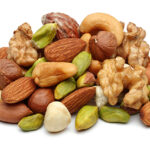We Are What We Ate
The New World bird that took over the Old World table
Christmas – our biggest annual celebration – may seem like an age-old tradition, but travel back in time, and you will find it was typically a modest event for most people and, at times, a non event. England’s Puritan government cancelled Christmas in 1647, forbidding traditional expressions of merriment, ordering shops to open, and churches to close. The Plymouth Colony Pilgrims worked in the fields on their first Christmas day; while over in Massachusetts Bay, Puritans outlawed Christmas 1659–81, fining anyone caught celebrating it five shillings.
Today’s Christmas with its trees, cards, crackers, carols, decorations, gifts, feasting, entertainments, and wishes for peace on earth and goodwill to all men and women comes from Victorian England. 1843 is something of a seminal year with Henry Cole launching the world’s first commercial Christmas cards and Charles Dickens publishing A Christmas Carol and putting turkey with the trimmings in prime position on Bob Cratchitt’s table.

Turkeys have been domesticated for some 2000 years or more. In America’s First Cuisines (written to highlight and celebrate the contribution made by the original inhabitants of the New World to the world’s food supply), anthropologist and food historian, Sophie D. Coe, tells us that the Aztecs had five domesticated animals: the turkey, the Muscovy duck, the dog, the bee, and the cochineal insect. By the sixteenth century, the number of turkeys the Aztecs raised was phenomenal. She quotes Motolinía, a Franciscan missionary who arrived in New Spain in 1524, who reports that “the market of Tepeyacac, just one of several suburban markets around Tenochtitlan, sold eight thousand birds every five days, and this all year round.”
According to Coe, the first actual evidence of turkey raising however, is in Maya territory. “The earliest bones of turkeys that could be considered domesticated were found in Tehuacan and date from between 200 BC and AD 700,” she writes. “Their use must have spread rapidly, because by the time the Europeans came exploring, turkeys seem to have been available beyond their natural range. Columbus may have brought them back from the islands on his first voyage, or perhaps he first saw them when he landed in Honduras on his fourth voyage. By 1511 the king of Spain was ordering every ship returning to Spain to bring back ten turkeys, five males and five females. It was one of the most rapid successes as far as the adoption of New World foodstuffs goes, speedily replacing the tough, stringy peacock as a spectacular dish for banquets.”
– America’s First Cuisines, University of Texas Press, 1994.







